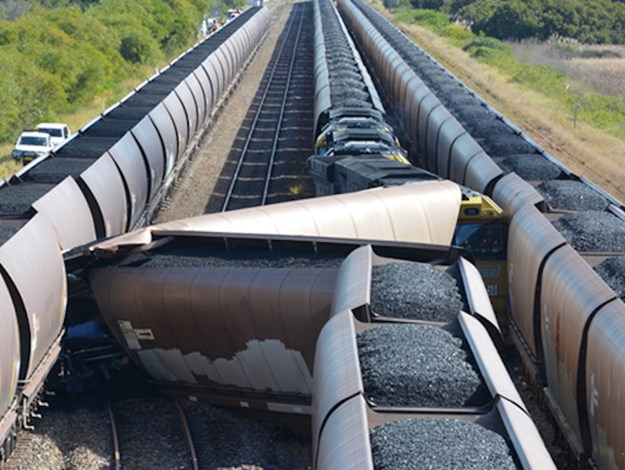The bureau stresses the importance of rail operators communicating with network control
The Australian Transport Safety Bureau (ATSB) has released its findings of an investigation into a 2020 Newcastle coal train collision.
On July 29 a Pacific National coal train collided with the rear of a stationary One Rail Australia (ORA) coal train when arriving at Kooragang Coal Terminal in Newcastle.
 |
|
The collision could’ve been afforded if proper communication was made according to the ATSB
|
The ATSB’s findings result in a recommendation to make safety changes to avoid the technical issues in future.
The stationary ORA train was found to have stopped due to technical issues but the crew failed to notify train control, meaning operators of both trains and the track manager have taken safety actions as a result.
Another key part of the incident was that the collision occurred in low-light conditions at the Port of Newcastle and when network control wasn’t advised of the second train being disabled.
The collision resulted in the Pacific National train and the two rearmost wagons of the ORA train derailing and coming into contact with two adjacent stationary trains, causing minor damage.
One of the Pacific National drivers sustained minor injuries and there was found to be substantial damage to the rail infrastructure.
The investigation into the incident was undertaken by the Office of Transport Safety Investigations (OTSI) which conducts rail safety investigations in New South Wales on behalf of the ATSB.
The investigation found that while the ORA train was unloading, several penalty brake applications associated with a fault in its electronic brake system had disabled, bringing the train to a standstill.
These faults were found to have caused the train’s end of train light being extinguished, but the crew didn’t report the issue.
“This disablement of the ORA train constituted a condition affecting the network, but the crew did not report this to the Kooragang network controller as they were required to do,” OTSI chief investigator Dr Natalie Pelham says.
RELATED ARTICLE: ATSB releases WA truck crash review
“Subsequently, the Kooragang network controller set a signal for the Pacific National train to proceed with caution along the arrival road where the ORA train was stationary.”
The terminal area where the accident occurred was poorly lit by artificial trackside lighting, and the absence of an end of train light at the rear of the stationary train reduced its visibility to oncoming trains according to the OTSI.
“Light produced by an overhead gantry, above the accident site, may also have caused disabling glare for the drivers of the PN train,” Pelham says.
Since the collision, Pacific National is issuing notices informing drivers to not exceed 8 kilometres per hour upon receiving a shunt proceed signal within Kooragang terminal.
ORA has also added programmed monitoring of end of train lights into its asset management plan, and circulated safety information to their drivers to remind them of the requirement to communicate all conditions affecting the network to network control.
The Australian Rail Track Corporation (ARTC) provides clarification advice to rail operators on the operation of trains with defective EOT lights and updated information contained in the Rail Access Standard.
The ARTC also plans to review the Kooragang Operations Protocol and conduct a risk assessment to ensure the risk of collision is effectively managed and controlled during operations.
“This accident highlights the importance of train crews communicating conditions affecting the network to network control,” Pelham says.
“It also emphasises the need for train crews operating in areas of restricted visibility to be prepared to stop short of any obstruction on the track.”

